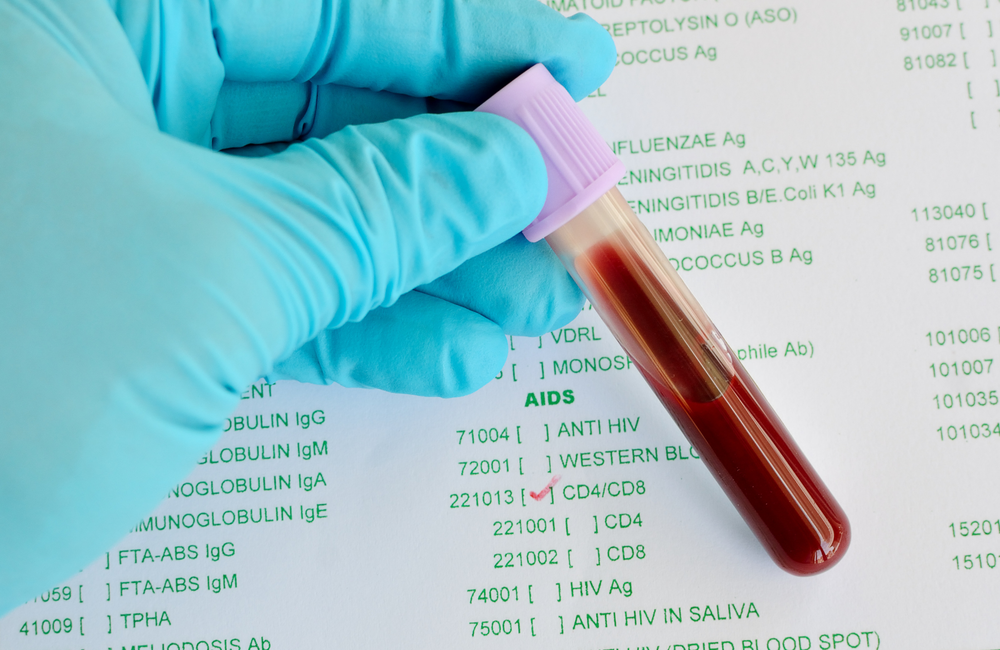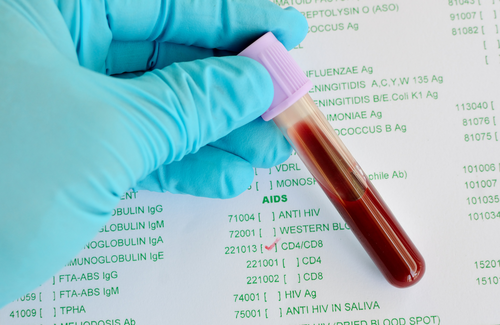
A large US study has identified an immune system signal that warns of an increased risk of several common cancers in people living with HIV up to two years ahead of diagnosis.
The study found that a low CD4/CD8 ratio was associated with an increased risk of developing any form of cancer in future follow-up periods of between six months and two years. But more precise analysis that controlled for other risk factors for cancer shows that the CD4/CD8 ratio may be especially useful for identifying people who require more intensive screening for lung cancer or anal cancer.
People with HIV have a higher risk of cancer than the general population, due in part to immunosuppression but also because of higher prevalence of viruses that cause cancer and of smoking.
Low CD4 count has been shown to predict a higher risk of some non-AIDS-defining cancers but there is interest in identifying other biomarkers that might be more sensitive. One potential marker is the CD4/CD8 ratio.
The CD4/CD8 ratio shows the ratio of CD4 count to CD8 cell count. In the general population, the ratio will usually be above 1. A large international study of people with HIV with suppressed viral load shows that the CD4/CD8 ratio improves over time but is less likely to approach the normal level in people who started treatment with a low CD4 count. The study showed that after eight years on treatment, the median CD4/CD8 ratio was 0.8.
A low CD4/CD8 ratio indicates high levels of immune activation, T-cell exhaustion and T-cell replicative senescence, where T-lymphocytes lose the ability to respond correctly to infectious agents. T-cell exhaustion and T-cell replicative senescence are features of ageing and are associated with an increased risk of cancer development.
Researchers associated with the North American AIDS Cohort Collaboration on Research and Design (NA-ACCORD) wanted to find out whether the CD4/CD8 ratio is a useful predictor of increased cancer risk in people with HIV. Their analysis is published in the Journal of the National Cancer Institute.
NA-ACCORD combines cohorts of adults with HIV in North America. Fifteen cohorts that collected information on cancer diagnoses between 1998 and 2016 contributed to the analysis, which included all cohort members who had been followed for at last 12 months. It excluded people who had cancer at the time they joined a cohort study or who developed cancer within six months of joining a cohort.
The study population was predominantly male (86%), 43% were White, 37% Black and 11% Latinx. The median CD4 cell count was 437 and the median CD4/CD8 ratio was 0.47 at study entry. Twenty-one percent had hepatitis C and 7% had hepatitis B, 29% had a history of heavy alcohol use and 33% had a history of smoking.
The majority of people in this study were taking antiretroviral therapy at study entry or began treatment soon after the follow-up period began. Fifty-eight percent had an undetectable viral load at the beginning of the follow-up period.
During the study period, 83,893 people with HIV were followed for 744,415 person-years and 5,628 cancers were diagnosed (6.7% of the cohort developed cancer during a median follow-up of 8.5 years).
The most frequently diagnosed cancers were prostate cancer (801 cases), lung cancer (755 cases), Kaposi’s sarcoma (501 cases), non-Hodgkin lymphoma (497 cases), anal cancer (439 cases), liver cancer (347 cases) and colorectal cancer (221 cases).
To assess the impact of CD4/CD8 ratio on the risk of developing cancer, the researchers compared two values (0.3 and 0.5) to the ratio of 0.8 and also looked at the differing risks associated with low CD4/CD8 ratios 6 months, 12 months, 18 months and 24 months prior to cancer diagnosis, which they term the lagged CD4/CD8 ratio.
A six-month lagged CD4/CD8 ratio of 0.3 or below increased the risk of any cancer by 24%. The increase in risk was almost identical (23%) when considering the 24-months lagged CD4/CD8 ratio.
In terms of specific cancers, a low CD4/CD8 ratio (0.3 or less) was associated with an increased risk for non-Hodgkin lymphoma, Kaposi sarcoma, lung cancer, anal cancer and colorectal cancer, again with little difference in risk between the six-month lagged CD4/CD8 ratio and other time points, except for non-Hodgkin lymphoma, where the lagged six-month ratio was associated with a higher risk than the lagged 24-month ratio.
But for several other cancers, a low lagged six-month CD4/CD8 ratio did not increase the risk of cancer at any time point. The risks of cervical cancer, head and neck cancer, prostate cancer, breast cancer and liver cancer were not affected by CD4/CD8 ratio, and the risk of Hodgkin lymphoma was only increased when the 12-month and 18-month lagged ratios were considered.
In a multivariable analysis that controlled for CD4 count, smoking, alcohol consumption and body weight, a low six-month lagged CD4/CD8 ratio was associated with an increased risk of any cancer, of non-Hodgkin lymphoma, lung cancer and anal cancer.
The study authors say that the strength of their study lies in the size of the population studied and the large number of cancers recorded. They say that further research is needed to define how and when the CD4/CD8 ratio can be used in cancer screening in people with HIV, but they conclude that CD4/CD8 ratio “may be a useful biomarker for screening for lung and anal cancer in people with HIV where the average age at diagnosis is younger than in the general population.”
Castilho JL et al. CD4/CD8 ratio and cancer risk among adults with HIV. Journal of the National Cancer Institute, published online 16 March 2022.

